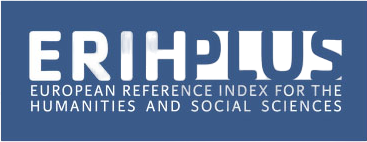Environmental normativity to regulate the presence of residual pharmaceutical products in aquatic environments
##plugins.themes.bootstrap3.article.main##
This is a review of the progress in global environmental normatives regarding controlling and monitoring of the polltion of water bodies by pharmaceutical products. A section on Colombian regulations is included as well as a discussion of the limitations present in making effective and efficient environmental legislations, mainly in water intended for human consumption.
Downloads
##plugins.themes.bootstrap3.article.details##
I. Al-Odaini, N; Zakaria, M; Yaziz, M; Surif, S. (2010). Multi-residue analytical method for human pharmaceuticals and synthetic hormones in river water and sewage effluents by solid-phase extraction and liquid chromatography–tandem mass spectrometry. Journal of Chromatography A, 1217, pp. 6791–6806.
II. Bellan, N; Pinto, T; Kaneko, T; Moretto, L; Santos, N. (2012). Critical analysis of the regulations regarding the disposal of medication waste. Brazilian Journal of Pharmaceutical Sciences. 48. pp. 507 – 513.
III. Bila, D; Dezzoti, M. (2003). Fármacos no meio ambiente. Química Nova, 26(4), p.523-530.
IV. Bu, Q; Wang, B; Huang, J; Deng, S; Yu, G. (2013). Pharmaceuticals and personal care products in the aquatic environment in China: A review, Journal of Hazardous Materials. 262, pp. 189-211.
V. Cai, K; Elliott, C; Phillips, D; Scippo, M; Muller, M; Connolly, L.
(2012). Treatment of estrogens and androgens in dairy wastewater by a constructed wetland system. Water research. 46, pp. 2333 –
VI. Dai, G; Wang, B; Huang, J; Dong, R; Deng, S; Yu, G. (2015). Occurrence and source apportionment of pharmaceuticals and personal care products in the Beiyun River of Beijing, China, Chemosphere, 119, pp. 1033-1039.
VII. D. 1575/2007. Por el cual se establece el Sistema para la Protección y Control de la Calidad del Agua para Consumo Humano. Bogotá D.C. Ministerio de Protección Social. 2007. 15 p.
VIII. FAO & PNUMA. (2015). Medidas de control del comercio internacional en virtud de los convenios de Basilea, Rotterdam y Estocolmo. Secretariat of the Basel, Rotterdam and Stockholm Conventions. Châtelaine GE, Switzerland, pp.8.
IX. Evgenidou, E., Konstantinou, I., & Lambropoulou, D. (2015). Occurrence and removal of transformation products of PPCPs and illicit drugs in wastewaters: A review. Science of The Total Environment, 505, 905-926.
X. Fisher, P & Scott, R. (2008). Evaluating and controlling pharmaceutical emissions from dairy farms: a critical first step in developing a preventative management approach. Journal of Cleaner Production. 16, pp. 1437–1446.
XI. Gabarrón, S., Gernjak, W., Valero, F., Barceló, A., Petrovic, M., & Rodríguez, I. (2016). Evaluation of emerging contaminants in a drinking water treatment plant using electrodialysis reversal technology. Journal of Hazardous Materials, 309, 192-201.
XII. Gemiliano, P. (2006). Análise comparativa de legislações relativas à Qualidade da Água para consumo Humano na América do Sul [dissertação]. [Belo Horizonte (MG)]:Programa de Pós Graduação em Saneamento, Meio ambiente e Recursos Hídricos. Universidade Federal de Minas Gerais, p. 212.
XIII. Glassmeyer, S., Furlong, E., Kolpin, D., Batt, A., Benson, R; Boone, J; Wilson, V. (2017). Nationwide reconnaissance of contaminants of emerging concern in source and treated drinking waters of the United States. Science of The Total Environment, 581-582, 909-922.
XIV. Guo, W; Zheng, H; Li, S; Du, J; Feng, X; Yin, R; Chang, J.
(2016). Removal of cephalosporin antibiotics 7-ACA from wastewater during the cultivation of lipid-accumulating microalgae. Bioresource Technology, 221, 284-290.
XV. Grill, G; Khan, U; Lehner, B; Nicell, J. & Ariwi, J. (2016). Risk assessment of down-the-drain chemicals at large spatial scales: Model development and application to contaminants originating from urban areas in the Saint Lawrence River Basin. Science of The Total Environment, 541, 825-838.
XVI. INS. Instituto Nacional de Salud. (2014). Vigilancia de la calidad del agua para consumo Humano Análisis comparativo Brasil y Colombia. Bogotá, D.C., Colombia. 20p.
XVII. Jelic´, A; Petrovic´, M. y Barcelo, D. (2012). Pharmaceuticals in Drinking Water. The Handbook of Environmental Chemistry. 20, pp 52.
XVIII. Kampa, E; Dworak, T; Laaser, C y Vidaurre, R. (2010). European Regulations. Chapter 17. En: K. Kümmerer, M. Hempel (eds.), Green and Sustainable Pharmacy. pp. 253 – 277.
XIX. Kiran, A; Chiranjeevi, P; Mohanakrishna, G; Venkata, S. (2011). Natural attenuation of endocrine-disrupting estrogens in an ecologically engineered treatment system (EETS) designed with floating, submerged and emergent macrophytes. Ecological Engineering. 37, p. 1555– 1562.
XX. Kleywegt, S; Pileggi, V; Yang, P; Hao, C; Zhao, X; Thach, S; Cheung, P & Whitehead, B. (2011). Pharmaceuticals, hormones and bisphenol A in untreated source and finished drinking water in Ontario, Canada — Occurrence and treatment eficiency. Science of the Total Environment. 409, pp. 1481–1488.
XXI. Lacina, P; Mravcov´, L; V´avrov´, M. (2013). Application of comprehensive two-dimensional gas chromatography with mass spectrometric detection for the analysis of selected drug residues in wastewater and surface water. Journal of Environmental Sciences, 25(1), pp. 204–212.
XXII. Lee, L; Carmosini, N; Sassman, S; Dion, H y Sepúlveda, M.
(2009). Agricultural Contributions of Antimicrobials and Hormones on Soil and Water Quality. Review. Advances in Agronomy, 93, pp. 1-68.
XXIII. Liu, S; Ying, G; Zhang, R; Zhou, L; Lai, H; Chen, Z. (2012). Fate and occurrence of steroids in swine and dairy cattle farms with different farming scales and wastes disposal systems. Environmental Pollution. 170, pp. 190- 201.
XXIV. L. 99/1993. Por la cual se crea el Ministerio del Medio Ambiente, se reordena el Sector Público encargado de la gestión y conservación del medio ambiente y los recursos naturales renovables, se organiza el Sistema Nacional Ambiental, SINA, y se dictan otras disposiciones. Congreso de la Republica de Colombia, 59p.
XXV. Manickum, T & John, W. (2014). Occurrence, fate and environmental risk assessment of endocrine disrupting compounds at the wastewater treatment works in Pietermaritzburg (South Africa). Science of The Total Environment, 468–469(0), 584-597.
XXVI. MAVDT. (2005). Política Ambiental para la Gestión Integral de Residuos o Desechos Peligrosos. Ministerio de Ambiente, Vivienda y Desarrollo Territorial. República de Colombia, pp 122.
XXVII. Marsalek, J. (2008). Pharmaceuticals and Personal Care Products (PPCP) in Canadian Urban Waters: A Management Perspective. En: P. Hlavinek et al. (eds.), Dangerous Pollutants (Xenobiotics) in Urban Water Cycle, p. 117–130.
XXVIII. McVey, E. (2012). Regulation of Pharmaceuticals in the Environment: The USA. Human Pharmaceuticals in the Environment: 49 Current and Future Perspectives, Emerging Topics in Ecotoxicology 4. pp. 49-61.
XXIX. Norman. (2012). Network of reference laboratories for monitoring of emerging environmental pollutants—Norman. Revisado el 12 de junio de 2015. http://www.normannetwork.net.
XXX. PNUMA. (2014). Convenio de Basilea sobre el Control de los Movimientos Transfronterizos de los Desechos Peligrosos y su eliminación. Secretariat of the Basel Convention International Environment House, p. 126. Disponible en: http://www.basel.int/Portals/4/Basel%20Convention/docs/text/BaselConventionTexts.pdf. Consultado en mayo de 2015.
XXXI. Quevauviller, P; Carere, M; Polesello, S. (2012). Chemical monitoring activity for the implementation of the Water Framework Directive. Trends in Analytical Chemistry. 36, pp. 1–184.
XXXII. Rahman, M; Yanful, E; Jasim, S. (2009ª). Endocrine disrupting compounds (EDCs) and pharmaceuticals and personal care products (PPCPs) in the aquatic environment: implications for the drinking water industry and global environmental health. Journal of Water and Health. 07 (2), pp. 224 – 243.
XXXIII. Rahman, M; Yanful, E; Jasim, S. (2009b). Occurrences of endocrine disrupting compounds and pharmaceuticals in the aquatic environment and their removal from drinking water: Challenges in the context of the developing world. Desalination 248, pp. 578–585.
XXXIV. Sharma, B; Bharat, G; Tayal, S; Nizzetto, L; Larssen, T.
(2014a). The legal framework to manage chemical pollution in India and the lesson from the Persistent Organic Pollutants (POPs). Science of the Total Environment, 490, p. 733-747.
XXXV. Sharma, B; Bharat, G; Tayal, S; Nizzetto, L; Larssen, T; Èupr, P. (2014b). Environment and human exposure to persistent organic pollutants (POPs) in India: A systematic review of recent and historical data, Environment International, 66, p. 48-64.
XXXVI. Silva, L; Lino, C; Meisel, L. & Pena, A. (2012). Ecopharmacovigilance. Pharmaceuticals in Drinking Water: 213–242.
XXXVII. Silva, C; Otero, M. & Esteves, V. (2012). Processes for the elimination of estrogenic steroid hormone from water: A review. Environmental Pollution, 165, p. 38-58.
XXXVIII. Straub, J. y Hutchinson, T. (2012). Environmental Risk Assessment for Human Pharmaceuticals: The Current State of International Regulations. Human Pharmaceuticals in the Environment: 17 Current and Future Perspectives, Emerging Topics in Ecotoxicology. 4, p. 17 – 47.
XXXIX. Tijani, J; Fatoba, O. & Petrik, L. (2013). A Review of Pharmaceuticals and Endocrine- Disrupting Compounds: Sources, Effects, Removal, and Detections. Water, Air, & Soil Pollution, 224 (11), p. 1-29.
XL. Unión Europea. (2001). Decisión No 2455/2001/CE del Parlamento Europeo y del Consejo de 20 de noviembre de 2001 por la que se aprueba la lista de sustancias prioritarias en el ámbito de la política de aguas. Diario Oficial de las Comunidades Europeas. L 331/1: 1-5.
XLI. Unión Europea. (2004). Directive 2004/27/EC of the European Parliament and of the Council of 31 March 2004 amending Directive 2001/83/EC on the Community code relating to medicinal products for human use. Official Journal of the European Union. L 136: 34 –
XLII. Unión Europea. (2013). Directiva 2013/39/UE del Parlamento Europeo y del Consejo, de 12 de agosto de 2013, por la que se modifican las Directivas 2000/60/CE y 2008/105/CE en cuanto a las sustancias prioritarias en el ámbito de la política de aguas. Diario Oficial de las Comunidades Europeas. 2013; L 226: p. 1-17.
XLIII. USEPA. (2007). Method 1694: Pharmaceuticals and Personal Care Products in Water, Soil, Sediment, and Biosolids by HPLC/MS/MS. U.S. Environmental Protection Agency Office of Water Office of Science and Technology Engineering and Analysis Division (4303T) 1200 Pennsylvania, NW Washington, DC. p. 72.
XLIV. USEPA. (2014a). Final 2012 and Preliminary 2014 Effluent Guidelines Program Plans. U.S. Environmental Protection Agency Office of Water Office of Science and Technology Engineering and Analysis Division (4303T) 1200 Pennsylvania, NW Washington, DC. p.53.
XLV. USEPA. (2014b). Announcement of Preliminary Regulatory Determination for Contaminants on the Third Drinking Water Contaminant Candidate List. Federal Register. Vol. 79, No. 202, pp. 62716.
XLVI. USEPA. (2015). Summary of Nominations for the Fourth Contaminant Candidate List. EPA 815-R-15-001. January, 2015.
XLVII. Verlicchi, P; Al Aukidy, M; Zambello, E. (2012). Occurrence of pharmaceutical compounds in urban wastewater: Removal, mass load and environmental risk after a secondary treatment—A review, Science of The Total Environment. 429, pp. 123-155.
XLVIII. Verlicchi, P., & Zambello, E. (2015). Pharmaceuticals and personal care products in untreated and treated sewage sludge: Occurrence and environmental risk in the case of application on soil -
A critical review. Science of The Total Environment, 538, 750-767.
XLIX. Wennmalm, Å. & Gunnarsson, B. (2010). Chapter 16. Experiences with the Swedish Environmental Classification Scheme. En: K. Kümmerer, M. Hempel (eds.) Green and Sustainable Pharmacy. pp. 243 – 249.
L. WHO. World Health Organization. (2012). Pharmaceuticals in drinking-water. WHO. Geneva, Switzerland, p. 52.
LI. Yang, Y; Ok, Y; Kim, K; Kwon, E., & Tsang, Y. (2017). Occurrences and removal of pharmaceuticals and personal care products (PPCPs) in drinking water and water/sewage treatment plants: A review. Science of The Total Environment, 596–597, 303-320.
LII. Zhang, D; Tan, S; Gersberg, R; Jern, W; keat, S. (2014). Removal of pharmaceuticals and personal care products in aquatic plant-based systems: A review. Environmental Pollution. 184, p. 620-639.
LIII. Zhang, M; Shi, Y; Lu, Y; Johnson, A., Sarvajayakesavalu, S; Liu, Z;, Jin, X. (2017). The relative risk and its distribution of endocrine disrupting chemicals, pharmaceuticals and personal care products to freshwater organisms in the Bohai Rim, China. Science of The Total Environment, 590–591, 633-642.
REFERENCIAS COMPLEMENTARIAS
LIV. Baena-Nogueras, Rosa María, González-Mazo, Eduardo, & Lara Martín, Pablo A. (2017). Degradation kinetics of pharmaceuticals and personal care products in surface waters: photolysis vs biodegradation. Science of The Total Environment, 590–591, 643-654.
LV. Colombia. Ministerio de Ambiente y Desarrollo Sostenible. Decreto Único Reglamentario del Sector Ambiente y Desarrollo Sostenible 1076 de 2015. 653 p.
LVI. PNUMA. (2009). Convenio de Estocolmo. Sobre Contaminantes Orgánicos Persistentes. Secretariat of the Stockholmo Convention. p.64. Disponible en: http://www.pops.int/documents/convtext/convtext_sp.pdf. Consultado en mayo de 2015.
LVII. R. 0371/2009. Por la cual se establecen los elementos que deben ser considerados en los Planes de Gestión de Devolución de Productos Posconsumo de Fármacos o Medicamentos Vencidos. Bogotá D.C. Ministerio de Ambiente, Vivienda y Desarrollo Territorial. 9 p.
LVIII. R. 2115/2007. Por medio de la cual se señalan características, instrumentos básicos y frecuencias del sistema de control y vigilancia para la calidad del agua para consumo humano. Bogotá D.C. Ministerio de Ambiente, Vivienda y Desarrollo Territorial. 23 p.
LIX. R. 631/2015. Por la cual se establecen los parámetros y los valores límites máximos permisibles en los vertimientos puntuales a cuerpos de aguas superficiales y a los sistemas de alcantarillado público y se dictan otras disposiciones. Bogotá D.C. Ministerio de Ambiente, Vivienda y Desarrollo Territorial. 23 p.
LX. Wernersson, A; Carere, M; Maggi, C; Tusil, P; Soldan, P; James, A, Kase, R. (2015). The European technical report on aquatic effectbased monitoring tools under the water framework directive. Environmental Sciences Europe, 27(1), pp. 1-11.

















